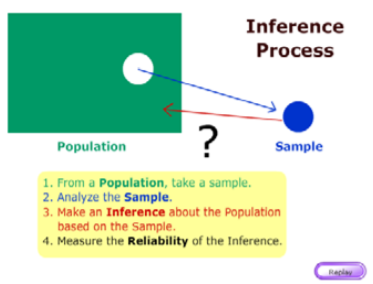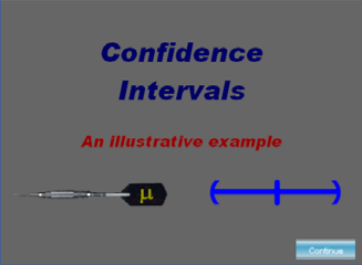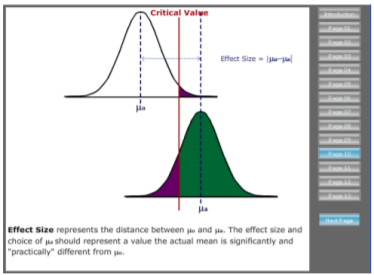15.4: Flash Animations
- Page ID
- 20866
I have designed four interactive Flash animations that will provide students with deeper insight of the major concepts of inference and hypothesis testing. These animations are on the website http://nebula2.deanza.edu/~mo/ .
Central Limit Theorem (Chapter 8)

Using die rolling with progressively increasing sample sizes, this animation shows the three main properties of the Central Limit Theorem.
Inference Process (Chapter 9)

This animation walks a student through the logic of the statistical inference and is presented just before confidence intervals and hypothesis testing.
Confidence Intervals (Chapter 9)

This animation compares hypothesis testing to an unusual method of playing darts and compares it to a practical example from the 2008 presidential election.
Statistical Power in Hypothesis Testing (Chapter 10)

This animation explains power, Type I and Type II error conceptually, and demonstrates the effect of changing model assumptions.


